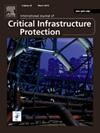互联网和移动通信对网络复原力的影响:多变量自适应回归样条线建模方法
IF 5.3
3区 工程技术
Q1 COMPUTER SCIENCE, INFORMATION SYSTEMS
International Journal of Critical Infrastructure Protection
Pub Date : 2024-10-18
DOI:10.1016/j.ijcip.2024.100722
引用次数: 0
摘要
宽带互联网的普及和移动通信服务的提供扩大了企业和公众获得数字服务的机会。但同时,这也加剧了确保数字空间安全、防范网络威胁和打击网络犯罪的问题。本研究旨在计算 143 个国家对网络黑客攻击的抵御能力指数,并根据这一抵御能力将这些国家分为若干组(高、高于平均水平、一般、低于平均水平和低),将这些结果与根据国家网络安全指数(NCSI)得出的结果进行比较,并确定一个国家的互联网和移动通信普及率对这一水平的影响。选择国家的依据是 Surfshark VPN 服务数据库和国际电信联盟提供的 2022 年统计数据。一个国家抵御网络黑客攻击的综合指数是通过被入侵账户数、互联网渗透率(通过互联网对用户数据的渗透)和每千名用户的入侵密度的乘法卷积(加权几何平均)计算得出的。使用多变量自适应回归样条曲线研究了活跃移动宽带用户(每百名居民)、移动宽带篮子(占人均国民总收入的百分比)、移动手机用户(每百名居民)和固定宽带用户总数对一国抵御网络黑客攻击能力综合指数的影响。根据计算结果,法国、冰岛、黑山、美国和阿拉伯联合酋长国是 2022 年抵御网络黑客攻击能力最低的国家。对于抵御网络黑客能力较高、高于平均水平和低于平均水平的国家,最相关的因素是活跃移动宽带用户数(每 100 名居民)。对于平均水平的国家,则是固定宽带用户总数。本文章由计算机程序翻译,如有差异,请以英文原文为准。
Impact of Internet and mobile communication on cyber resilience: A multivariate adaptive regression spline modeling approach
The spread of broadband Internet and the availability of mobile communication services expand access to digital services for businesses and the public alike. However, at the same time, it aggravates the problem of ensuring digital space security, protection against cyber threats, and the fight against cybercrime. This research aims to calculate the index of a country's resilience to cyber-hacking for 143 countries, to divide these countries into groups based on this resilience (high, above-average, average, below-average, and low), compare these results with those obtained on the basis of National Cyber Security Index (NCSI), and to identify the impact of the Internet and mobile communication prevalence in a country on this level. The selection of the countries is based on the availability of statistical data for 2022 in the databases of the Surfshark VPN service, and the International Telecommunication Union. The integral index of a country's resilience to cyber-hacking is calculated through the multiplicative convolution (with weighted geometric mean) of the number of breached accounts, the Internet penetration probability (penetration into users’ data through the Internet), and the breach density per thousand users. The influence of active mobile broadband subscriptions (per 100 inhabitants), mobile broadband basket (% of Gross National Income Per Capita), mobile cellular subscriptions (per 100 inhabitants), and total fixed broadband subscriptions on the integral index of a country's resilience to cyber-hacking is investigated using multivariate adaptive regression spline. According to the calculations, France, Iceland, Montenegro, the United States, and the United Arab Emirates were the least resistant to cyber hacking in 2022. For countries with high, above-average, and below-average levels of resilience to cyber-hacking, the most relevant factor is the number of active mobile broadband subscriptions (per 100 inhabitants). For countries with an average level, it is total fixed broadband subscriptions.
求助全文
通过发布文献求助,成功后即可免费获取论文全文。
去求助
来源期刊

International Journal of Critical Infrastructure Protection
COMPUTER SCIENCE, INFORMATION SYSTEMS-ENGINEERING, MULTIDISCIPLINARY
CiteScore
8.90
自引率
5.60%
发文量
46
审稿时长
>12 weeks
期刊介绍:
The International Journal of Critical Infrastructure Protection (IJCIP) was launched in 2008, with the primary aim of publishing scholarly papers of the highest quality in all areas of critical infrastructure protection. Of particular interest are articles that weave science, technology, law and policy to craft sophisticated yet practical solutions for securing assets in the various critical infrastructure sectors. These critical infrastructure sectors include: information technology, telecommunications, energy, banking and finance, transportation systems, chemicals, critical manufacturing, agriculture and food, defense industrial base, public health and health care, national monuments and icons, drinking water and water treatment systems, commercial facilities, dams, emergency services, nuclear reactors, materials and waste, postal and shipping, and government facilities. Protecting and ensuring the continuity of operation of critical infrastructure assets are vital to national security, public health and safety, economic vitality, and societal wellbeing.
The scope of the journal includes, but is not limited to:
1. Analysis of security challenges that are unique or common to the various infrastructure sectors.
2. Identification of core security principles and techniques that can be applied to critical infrastructure protection.
3. Elucidation of the dependencies and interdependencies existing between infrastructure sectors and techniques for mitigating the devastating effects of cascading failures.
4. Creation of sophisticated, yet practical, solutions, for critical infrastructure protection that involve mathematical, scientific and engineering techniques, economic and social science methods, and/or legal and public policy constructs.
 求助内容:
求助内容: 应助结果提醒方式:
应助结果提醒方式:


